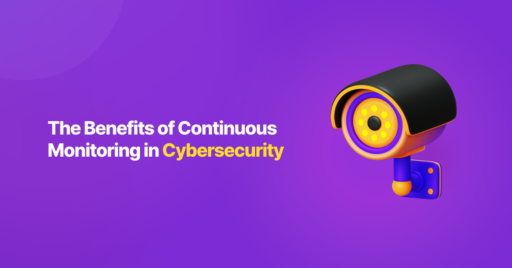The COVID-19 outbreak has forced agile teams in organizations around the world to go remotely. This goes against the core nature of agile teams as traditionally, they thrive as clusters in physical locations, aka as the Co-located Model.
Many previously flat-structured companies had already successfully moved to a distributed or dispersed team model, but this turned out to be difficult for hierarchical corporations. But organizations need to adapt.
The transition from a centrally located environment to a remote setting can be tough, but not impossible. In fact, with the use of modern technological development, the remote setup of such teams can be streamlined and scaled.
Co-located vs Distributed vs Dispersed Teams
Before diving deep into the transition from a physically located team to a remote setup, understanding of the different types of team is necessary. So, what are the differences between a co-located, distributed, and dispersed team?
- Co-located team: All the members working on a project are physically located in a single office space. This gives extensive flexibility as any interrelated activities can be solved with very short notice, and thus it makes a perfect setup for agile practices.
- Distributed team: A number of cross-functional teams are located in different geolocations, but the members of a single team still work from a physical space.
- Dispersed team: The distribution goes further, and most team members work from a different place.
With the COVID-19 crisis, most of the teams have become dispersed to avoid the risks of contamination in a centralized working space.

The Challenges of Remote Agile Practices
The agile method of development was first introduced for centralized teams in an organization. To improvise rapidly and adapt to changing or evolving requirements, these teams needed face-to-face discussions, collaborations between team members, team meetings at short notice, along with other provisions that can only be achieved with a team working at close proximity.
Communication is key for a team practising agile, and it goes beyond the usual team meetings; even small chit chats are seen as a key. The team members need to maintain a very healthy relationship between them and should be reachable all the time.
While this can be maintained easily for co-located teams, it is tough to achieve in a remote setup, especially for a dispersed team. These team members are often scattered globally in different time zones, and the lack of any centralized setup hampers the collaborative pace of the work. Many also struggle with proper and efficient team interaction and integration. In fact, this was one of the key reasons that corporations did not allow work-from-home for their employees.
External factors including unstable internet connections and home working conditions also impact the agile practices of these remote teams.
According to a Harvard Business Review study conducted in March 2020, 80% of the remote workers admitted that they would have a better relationship with team members if they have frequent communications, while 84% believe that workplace challenges and concerns slowed teams down.
Dispersed Team Structure
In general, an agile team consists of the core development team, the product owner, and of course the scrum master. In a dispersed setup the role of scrum master becomes very crucial as that person needs to ensure that the team lives up to agile values and principles.

The challenge arises when the teams need to be motivated to follow agile practices without any direct supervision.
While building an agile team, the composition of members needs to be optimised. The team should, where possible, be located in neighbouring timezones – this adds to the collaborative efforts of the team and helps in increasing “the golden hours.” This crisis has had less impact on previously physically located teams forced to work remotely by the Coronavirus crisis.
To achieve an agile level of communication in a dispersed team, the diversity factor needs to be fully addressed. For clear communication over audio and video calls, the language of the team members plays a crucial role as other forms of channels are very limited in a dispersed team.
Investment in Remote Working Tools
The process of setting up a distributed or dispersed team is important, and it is not limited to skilled team members. The team must be equipped with a proper set of tools and other infrastructure that removes the communication barriers and minimises other important task management issues.
Luckily many of these tools are already available and teams are using them even in a centralized setup, but when it comes to the dispersed teams, the role of these remote working tools becomes crucial.
- Collaboration tools: Dispersed teams are replacing the usual face-to-face sessions between the team members that were one of the cores of agile practices. These sessions give a clear picture of the goals and challenges faced by them. While working remotely, these remote teams are completely relying on conferencing tools for such sessions, and thus choosing proper tools becomes crucial.
Two excellent tools for video conferencing are Zoom and Skype – both can be used for free with limited functionalities. Microsoft Teams is probably one of the best as it brings crucial features including conferences and chat. For collaboration within the team, Slack is also a good option. At Mitrais, we are using a blend of all these tools to streamline our dispersed teams.
- Project Management: Keeping everyone in a team on the same page is important, and when it comes to agile, it becomes a priority. Though this is a challenge for dispersed teams, many tools allow everyone in the team – from product owners to developers – to update minute by minute progress made.
Trello is probably the simplest of such tools, and it is being used not only by our remote agile teams, but also by other teams like marketing, recruitment, and even sales. Our development teams also use JIRA and Microsoft Azure DevOps (previously known as Microsoft Team Foundation Server) as both of them improve the progress tracking of a project.
- Version Control: For software development, it is crucial for the team to manage source code over time and version control tools offer exactly that. Their importance for a dispersed team is vital, and enforces individual responsibility for making changes, rather than the traditional method of relying on a Software Configuration Manager. These tools also track individual contributions and prevent any conflict in the development process.
Some of the popular version control tools are GitHub, BitBucket, and Microsoft Azure DevOps and these are also the top tool choices for Mitrais remote teams.
Agile Practices for Building a Dispersed Team
When a centrally located agile team is transitioned to a dispersed one or even a new remote agile team is formed, the process is not always smooth. In fact, agile practices need to be followed for streamlining the teamwork itself. Testing and improvising processes are the keys as often each project is different and there are no proven techniques to make them work.
Ceremonies are crucial in agile teams, and the scrum master should be innovative to maintain such principles and values remotely.
Both formal and informal conversations between the team members are required to get the best out of the team. The team managers can schedule formal meetings for discussion on user stories, but the members should also engage in one-to-one talks.
For small teams, team meetings can be replaced with chat gatherings to remove formal restrictions on the team. This can help to build trust in the members who might be sitting hundreds or even thousands of miles from each other.
Other practices like the use of whiteboards and planning poker tools for sprint planning, commitment meetings, and even team member surveys to capture feedback at retrospective can be followed.
The level of documentation should also be increased in a remote setting as this will significantly reduce the reliance of the developers on each other.
Most importantly, scrum masters and development team members should commit to realistic sprint velocities and should review complexity and scale accordingly. User stories should be broken into smaller pieces and over complex stories that require contributions from multiple team members should be avoided, where possible.
The remote team should also prioritize small spikes to check the ideal working conditions.
The scrum master, development team, and product owner should also raise questions regularly for more clarity on each user story. They also need to have regular contact with other teams to share and learn the practices they are following to make the best use of their teams – after all the process of distributing an agile team may be new to all.
How is Mitrais Adapting to a Remote Working Environment?
Though the COVID-19 crisis forced all employees at Mitrais to work remotely from their home, the culture already existed in the company. Most Mitrais employees were used to the option of remote working under certain conditions by receiving proper approvals, but they preferred to work from the office anyway.
To make our 100% remote teams efficient, our Engagement Managers are responsible for managing these dispersed teams.
After months of working remotely, we have learned that it is crucial to ask the team members individually about the challenges they are facing. Our members have streamlined their work significantly by moving to a dedicated workspace or a desk in their homes.
With the help of a handful of remote tools as mentioned in the previous section, team communication has become efficient, but challenges to achieve agile-level communication persists. We are encouraging the teams to have informal chit chats among themselves and making all communication informal to an extent.
To avoid distraction, our teams set clear daily and weekly goals which also increases efficiency significantly, and to reduce the physiological stress, our managers are even directing the team to take breaks or even stretch by moving around the house or yard.
Yes, the Remote Agile Team Can be Efficient
Interestingly, many tech giants recently also allowed their employees to permanently work remotely.
Practising agile techniques is difficult for dispersed teams, but when it can be perfect, it can add a lot of value to an organization. The initial transition may be tough, but the ongoing pandemic forced many companies to distribute their teams. Now the focus is on how they can work efficiently, practising agile.






